Common names: stoat, ermine, ‘weasel’ in Ireland
Scientific name: Mustela erminea
Family: Mustelidae
Habitat: woodland, grassland, farmland, upland
Diet: rabbits, rodents and birds
Predators: foxes and birds of prey
Origin: native
Fast and definitely furious. The stoat is not afraid to take on prey more than five times its size. Up trees or underground, there are few places this potent predator won’t go in search of its next meal.
Common names: stoat, ermine, ‘weasel’ in Ireland
Scientific name: Mustela erminea
Family: Mustelidae
Habitat: woodland, grassland, farmland, upland
Diet: rabbits, rodents and birds
Predators: foxes and birds of prey
Origin: native
Stoats have a long, thin body with a tail that ends in a bushy black tip. Their fur is sandy-brown to chestnut with white-cream underparts. The species is small, typically just 30–40cm in length and weighing 200–400 grams.
It's thought that the black tip to a stoat’s tail serves to distract birds of prey. The predator’s attention is drawn to it and it focuses its attack on the tail rather than on the more vulnerable parts of the stoat’s body.
Some stoats turn completely or partially white in winter, particularly in northern parts of the UK where snow is more common, but the black tip on the tail always remains. The white fur is known as 'ermine' and helps the stoat blend in with snowy surroundings when hunting.
Not to be confused with: the weasel, which is smaller and has a short stubby tail without a black tip.
Stoats are reputed to ‘dance’ in a bid to mesmerise rabbits. They have been observed leaping and thrashing around in a motion that seems to hypnotise their prey. It’s unclear if this is a genuine hunting technique or the result of a parasite infection.
Rabbits are a stoat’s favoured prey, even though they can be more than five times their size. They will also take rodents, such as voles, mice and rats, as well as birds and their eggs. An energetic hunter, stoats readily pursue mice and voles into their underground burrows and will climb trees to raid birds’ nests.
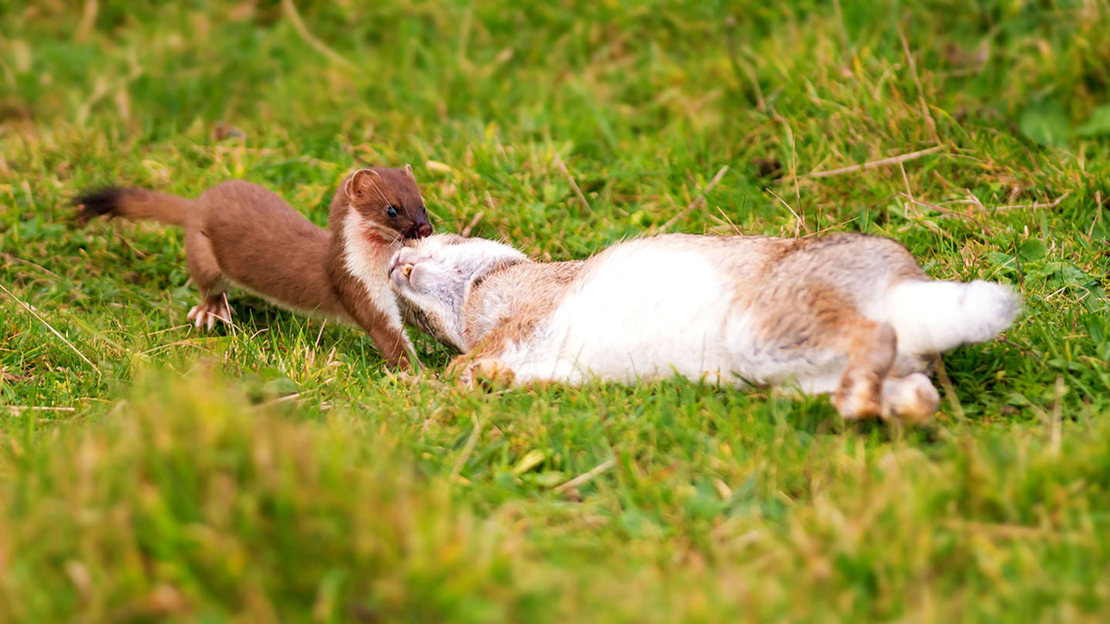
Stoats are solitary for most of the year, only coming together to breed. A litter of around 6 to 12 young, known as kits, are born in spring. The female will care for the young until they are self-sufficient at around 12 weeks.
Female stoats can become pregnant just a few weeks after birth. However, a process known as delayed implantation means the young will not be born until the female has matured around nine to 10 months later.
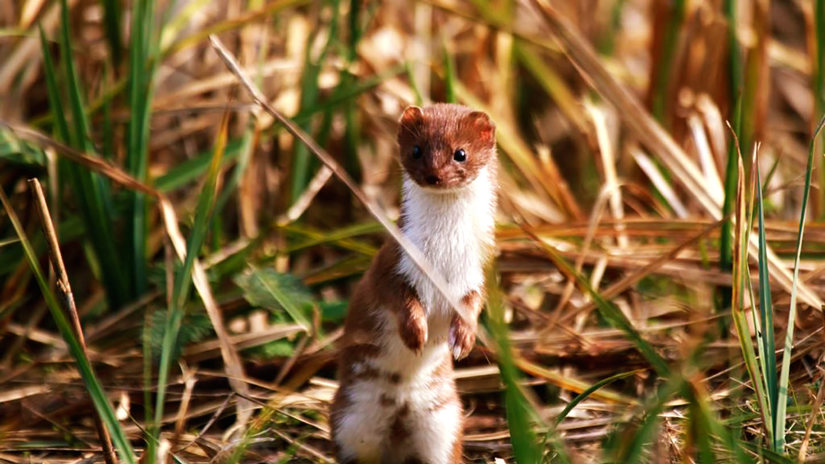
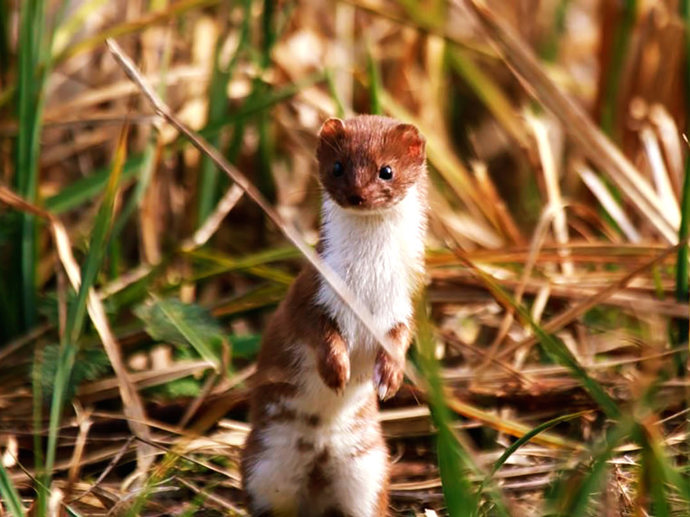
James Martin • 01 Feb 2019
Did you see a stoat on your last woodland walk? Or perhaps it was a weasel? Our guide will help you to tell these pint-sized predators apart. We also take a look at some of the other related species found here in the UK.
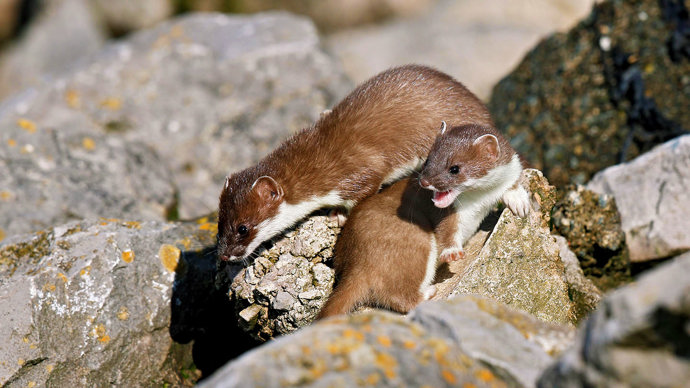
Credit: Alan Williams / Alamy Stock Photo
Stoats are found throughout the UK and can live in most habitats, provided there is prey to eat and cover to shelter in. The species avoids spending long in the open, where it is vulnerable to attack from larger predators, such as foxes and birds of prey. It tends to stick to cover and will often use linear features such as hedgerows and drystone walls to move around its territory.
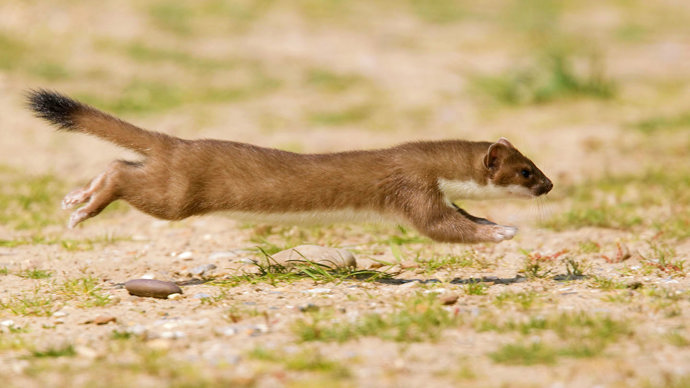
Credit: Bill Coster / Alamy Stock Photo
Stoats are not easy to spot, with most sightings little more than a fleeting glimpse. If you are determined, a patient vigil of a rabbit warren may reward you with a view of a stoat looking for its next meal.
Stoats are widespread and thought to be common, but there is a lack of reliable evidence on their numbers. The loss of hedgerows and a decline in the rabbit population are factors that may have a negative impact on the species.